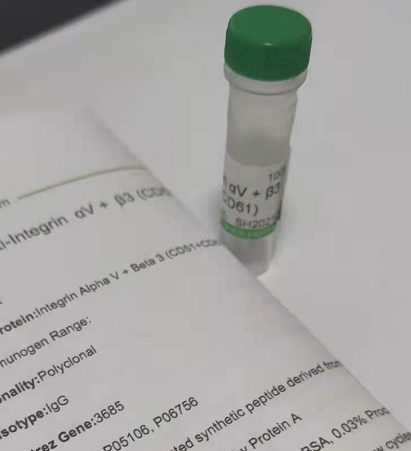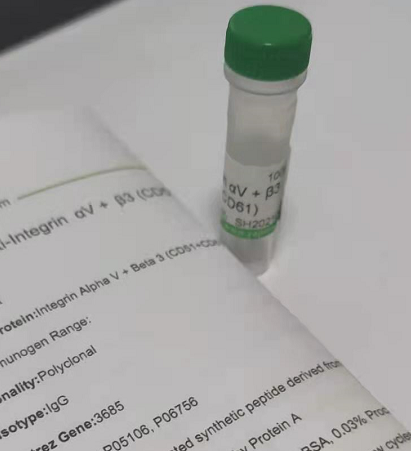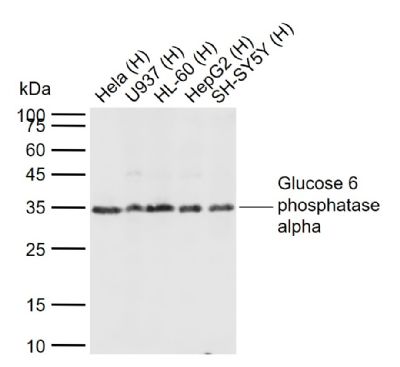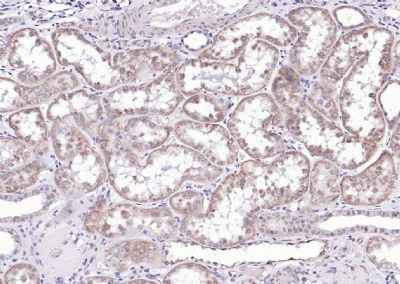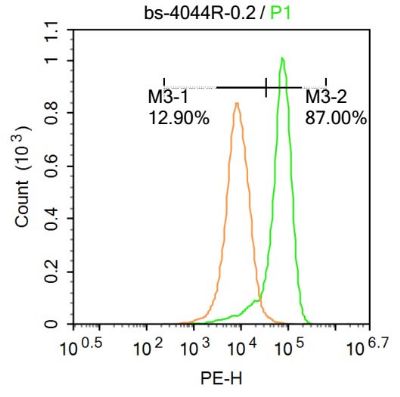| 產(chǎn)品編號(hào) | Ys-4044R |
| 英文名稱 | G6PC |
| 中文名稱 | 葡萄糖6磷酸酶α/G6Pase-α抗體 |
| 別 名 | glucose-6-phosphatase, catalytic subunit; GSD1; AW107337; G-6-Pase; G6Pase; G6Pase-alpha; Glucose 6 phosphatase alpha; G6PC_HUMAN; G6PT; Glucose-6-phosphatase alpha; Glucose-6-phosphatase; GSD1a; MGC163350; MGC93613; RP23-281C18.19. |
| 抗體來源 | Rabbit |
| 克隆類型 | Polyclonal |
| 交叉反應(yīng) | Human, Rat, (predicted: Mouse, Dog, Pig, Cow, Rabbit, Sheep, ) |
| 產(chǎn)品應(yīng)用 | WB=1:500-2000 ELISA=1:5000-10000 IHC-P=1:100-500 Flow-Cyt=0.2ug/test (石蠟切片需做抗原修復(fù)) not yet tested in other applications. optimal dilutions/concentrations should be determined by the end user. |
| 理論分子量 | 39kDa |
| 細(xì)胞定位 | 細(xì)胞漿 細(xì)胞膜 |
| 性 狀 | Liquid |
| 濃 度 | 1mg/ml |
| 免 疫 原 | KLH conjugated synthetic peptide derived from human Glucose 6 phosphatase alpha: 81-180/357 |
| 亞 型 | IgG |
| 純化方法 | affinity purified by Protein A |
| 緩 沖 液 | 0.01M TBS(pH7.4) with 1% BSA, 0.03% Proclin300 and 50% Glycerol. |
| 保存條件 | Shipped at 4℃. Store at -20 °C for one year. Avoid repeated freeze/thaw cycles. |
| 注意事項(xiàng) | This product as supplied is intended for research use only, not for use in human, therapeutic or diagnostic applications. |
| PubMed | PubMed |
| 產(chǎn)品介紹 | Glucose-6-phosphatase (G6Pase) is a multi-subunit integral membrane protein of the endoplasmic reticulum that is composed of a catalytic subunit and transporters for G6P, inorganic phosphate, and glucose. This gene (G6PC) is one of the three glucose-6-phosphatase catalytic-subunit-encoding genes in human: G6PC, G6PC2 and G6PC3. Glucose-6-phosphatase catalyzes the hydrolysis of D-glucose 6-phosphate to D-glucose and orthophosphate and is a key enzyme in glucose homeostasis, functioning in gluconeogenesis and glycogenolysis. Mutations in this gene cause glycogen storage disease type I (GSD1). This disease, also known as von Gierke disease, is a metabolic disorder characterized by severe hypoglycemia associated with the accumulation of glycogen and fat in the liver and kidneys.[provided by RefSeq, Feb 2011] Function: Hydrolyzes glucose-6-phosphate to glucose in the endoplasmic reticulum. Forms with the glucose-6-phosphate transporter (SLC37A4/G6PT) the complex responsible for glucose production through glycogenolysis and gluconeogenesis. Hence, it is the key enzyme in homeostatic regulation of blood glucose levels. Subcellular Location: Endoplasmic reticulum membrane; Multi-pass membrane protein. DISEASE: Defects in G6PC are the cause of glycogen storage disease type 1A (GSD1A) [MIM:232200]. A metabolic disorder characterized by impairment of terminal steps of glycogenolysis and gluconeogenesis. Patients manifest a wide range of clinical symptoms and biochemical abnormalities, including hypoglycemia, severe hepatomegaly due to excessive accumulation of glycogen, kidney enlargement, growth retardation, lactic acidemia, hyperlipidemia, and hyperuricemia. Similarity: Belongs to the glucose-6-phosphatase family. SWISS: P35575 Gene ID: 2538 |
| 產(chǎn)品圖片 | Sample: Lane 1: Human Hela cell lysates Lane 2: Human U937cell lysates Lane 3: Human HL-60 cell lysates Lane 4: Human HepG2 cell lysates Lane 5: Human SH-SY5Y cell lysates Primary: Anti-Glucose 6 phosphatase alpha (bs-4044R) at 1/1000 dilution Secondary: IRDye800CW Goat Anti-Rabbit IgG at 1/20000 dilution Predicted band size: 39 kDa Observed band size: 35 kDa Paraformaldehyde-fixed, paraffin embedded (Human kidney); Antigen retrieval by boiling in sodium citrate buffer (pH6.0) for 15min; Block endogenous peroxidase by 3% hydrogen peroxide for 20 minutes; Blocking buffer (normal goat serum) at 37°C for 30min; Antibody incubation with (Glucose 6 phosphatase alpha) Polyclonal Antibody, Unconjugated (bs-4044R) at 1:200 overnight at 4°C, followed by operating according to SP Kit(Rabbit) (sp-0023) instructionsand DAB staining. U-937 cells were incubated in 5% BSA blocking buffer for 30 min at room temperature. Cells were then stained with bs-4044R Antibody at 1:500 dilution in blocking buffer and incubated for 30 min at room temperature, washed twice with 2%BSA in PBS, followed by secondary antibody incubation for 40 min at room temperature. Acquisitions of 20,000 events were performed. Cells stained with primary antibody (green), and isotype control (orange). U-937 cells were incubated in 5% BSA blocking buffer for 30 min at room temperature. Cells were then stained with bs-4044R Antibody at 1:500 dilution in blocking buffer and incubated for 30 min at room temperature, washed twice with 2%BSA in PBS, followed by secondary antibody incubation for 40 min at room temperature. Acquisitions of 20,000 events were performed. Cells stained with primary antibody (green), and isotype control (orange). |
我要詢價(jià)
*聯(lián)系方式:
(可以是QQ、MSN、電子郵箱、電話等,您的聯(lián)系方式不會(huì)被公開)
*內(nèi)容:


